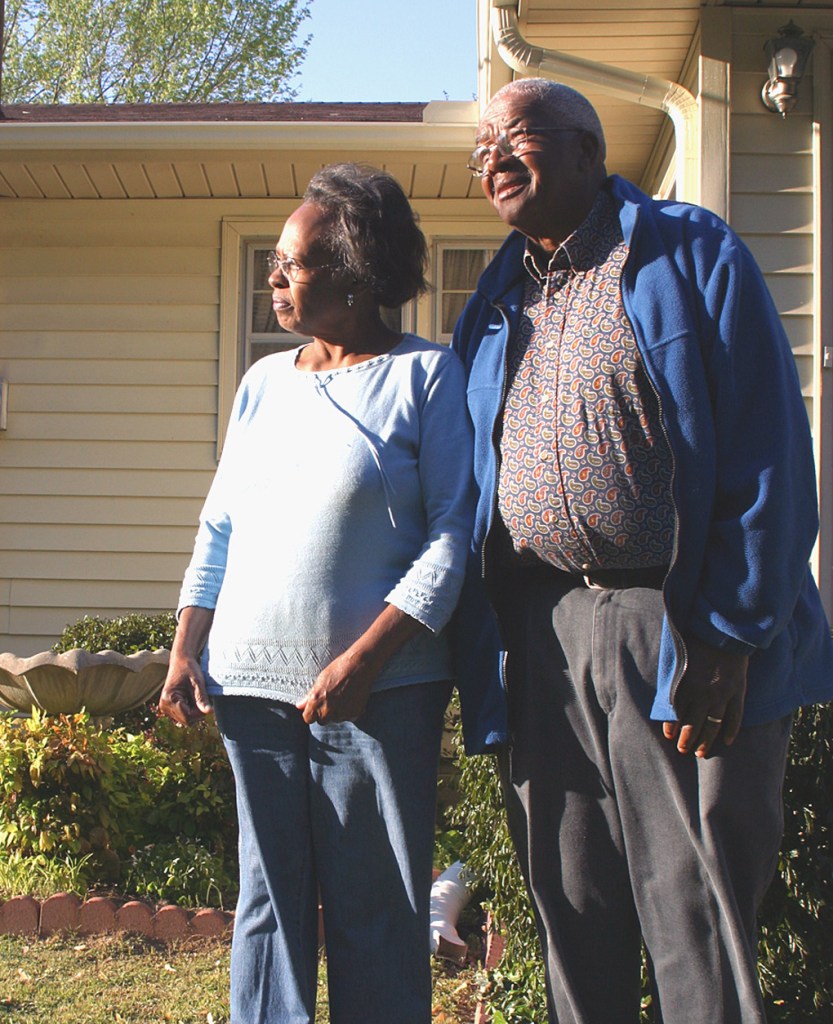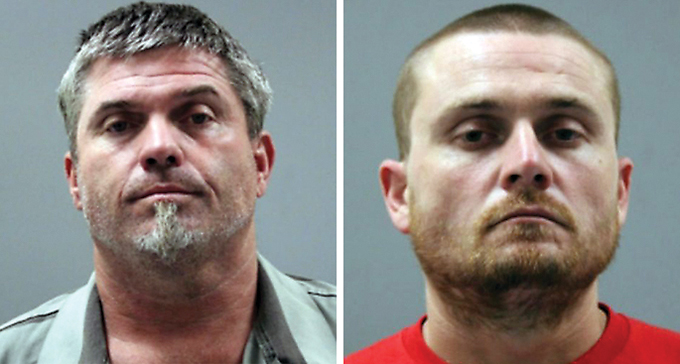Survivors of ’74 super tornado outbreak explore book’s impact
Published 9:50 pm Tuesday, April 10, 2007

- The Rev. Ananias Green, who informally changed the spelling of his name from Annias, these days looks to the future with his wife, Sarah. He has given only two interviews about the night his first wife and son were killed.
The stories of the local people that follow are described in detail in Mark Levine’s book.
“F5: Devastation, Survival, and the Most Violent Tornado outbreak of the Twentieth Century,” due in stores June 6 from Miramax Books. Advanced copies of the hardcover book are being sold on amazon.com for $17.13 rather than the list price of $25.95.
The McGlocklins
Walter McGlocklin, now 63, lives in a home in Tanner he rebuilt in 1974. It is a duplicate of the one that blew apart on April 3 of that year, toppling a chimney onto his wife, Ruth, who was futilely shielding Walter Jr., 2, and Sandra, 5.
Walter, an Athens Utilities lineman called from his only son’s birthday party to help repair downed power lines from high winds earlier in the day, returned to the home after two tornadoes struck the area — the first at Lawson’s Trailer Park, the second at his home.
When he saw the rubble of his home, he rushed inside and began digging. He could hear cries of a small child, Nancy.
He freed the hysterical three-year-old, but she could not stop screaming. Walter knew he needed to keep digging and soon he saw his wife, Walter Jr. and Sandra. They had been crushed to death.
Another daughter, Grace, 7, was also freed, as was Walter’s nephew Jerry Beckham, 15.
Understandably, Walter does not often speak of that night.
“I wasn’t going to talk to that fella,” he said of Levine. “But I said, well, they need to be remembered. My wife and two children got killed and I’d like for them to be remembered.”
Walter learned to care for his surviving daughters. He is proud of his girls, now grown and married (Nancy Johnson and Grace Sides).
The storms instilled in him a deep fear and respect for the damage they can do.
“I built a storm house right behind my house,” he said. “I go there if it gets rough.”
Every few years when deadly tornadoes strike, like the one in south Huntsville in 1989 and Enterprise on March 1, Walter tries to avoid media coverage.
“It brings back bad memories,” he said.
While clearing his land after the tornado, someone found a damaged photo and gave it to Walter. It was of Walter Jr. It was the only photo found of his family and Walter keeps it on display.
While others who did not experience loss of family members like to joke about what actors would play them if a film were to be made from the book “F5,” Walter is not excited about the prospect.
“I probably won’t go to see it,” he said. “I know what happened. I built back in the same place. I won’t ever forget it.”
Donnie and Felica Powers
In April 1974, Felica Golden, 15, wasn’t happy with her boyfriend Donnie Powers, 18, a football star at Ardmore High School. The two had argued over reports that he had “stepped out on her” while on a trip; he responded by giving her a promise ring.
The events of April 3 would make any such disagreements unimportant.
The couple was following Felica’s aunt in Donnie’s Mustang when the tornado struck. The car flipped numerous times, throwing them from the car.
Felica’s Aunt Kay, driving in the car in front of them with four children in her car, noticed the young couple’s headlights had disappeared from her rearview mirror.
“She thought we got scared and turned around and went home,” she said. “She had no idea it was a tornado.”
Felica, not knowing tendons in her ankle were nearly severed, walked around and searched for Donnie, who had been struck hard by a flying rock in the back of his head.
Felica says now that mud must have held her ankle together. She was too dazed to know how injured she was. She wanted only to find Donnie, but she would not know of his fate until much later.
Even later still, Felica would learn Donnie had been loaded in a hearse and driven to Huntsville Hospital’s morgue.
He wasn’t dead, though. He eventually emerged from a coma and soon returned to his former self.
When you live through what they did, you share a bond.
The bond has lasted 33 years. The young couple married, with permission from Felica’s parents, just months after the tornadoes.
Levine quotes Donnie: “After the tornado, I just didn’t want to let Felica out of my sight. I was afraid of losing her.”
Because theirs has a happier ending than most of the stories during this storm, Felica said she would be excited to see her advance copy of “F5”when it arrives. She realizes, though, those who suffered greater losses might have a more difficult time with the book’s release.
“It brings back a lot of memories,” she said. “Some of them not good memories. It brings everything back.”
As Levine describes in “F5,” Felica has a recurring dream about that night.
“I can still relive it like it was yesterday,” she said. “I can still feel the car flipping. I really can.”
Despite the pain they suffered and the fear tornadoes instill to this day, she knows at least one good thing came of it.
“I’ve had 30-something years of a wonderful life because of it,” she said of her marriage to Donnie. “It brought us closer together, like we should have been.”
Marilyn McBay
Marilyn McBay, now 57, was a young mother when the tornado struck her parents’ home, where she and her husband were staying on April 3, 1974.
She was holding 6-day-old Mark; her mother held 2-year-old Jason. As the family, seven members in all, were sucked from the U.S. 72 East home, the children were pulled from the protective arms.
It was hours before a dazed Marilyn discovered her sons were OK.
“A lot of people don’t know about it,” she says now of her experience. “Just my family and close friends know.”
For her family, the aftermath was a time to give thanks, despite the loss of her parents’ home and possessions and her mother’s serious injuries that left her in pain for much of the remainder of her life.
“We were all spared,” she said. “It’s a day to be thankful. You found out how good people are. Everyone was just so wonderful to draw together in the community.”
Still, the losses were hard.
“My parents lost everything,” she said. “It was heartbreaking to see your parents start over. But Mother wasn’t a complainer at all. She was in pain a lot, but you wouldn’t know it.”
Marilyn never dwelled on memories of the day, she said, except perhaps “when April 3 comes around.”
So Levine’s request for an interview stirred memories.
“There are so many funny things and tragic things that happen,” she said. “It was a joke later on when Mother would look for something and we’d look at each other and say, ‘Was that before the storm or after the storm that we had that?’” Marilyn says. “It was a point where life stopped and started over.”
Spencer Black
Spencer Black, now 63 and director of Limestone County’s Emergency Management Agency, was at the time of the storm, in charge of Civil Defense here.
He is described in the book as wild, headstrong and lacking direction before finding his calling in life.
Black spent the evening of April 3 manning radio transmissions and warning the people of Limestone County, along with meteorologist H.D. Bagley, broadcast journalist Bill Dunnavant, and radio disc jockey and announcer Mike Davis (now Limestone County probate judge) of the impending danger.
In the aftermath, he was hailed a hero, Levine recounts.
Black said he hopes the book will have some impact.
“Hopefully, it will make people realize these kinds of things can happen,” he said.
Although warning systems and storm forecasting have advanced in the past three decades, these systems don’t work if people do not heed the danger, he said.
Two of Black’s assistants at EMA, Daphne Ellison and Rita White, added their memories of the 1973 tornadoes to the conversation.
Ellison, then 9, spent the evening in the basement of her family’s home in Clements, which was not an infrequent occurrence here in Tornado Alley.
“I remember being woken up and told ‘Get down in that basement now! There’s a storm coming,’” she said.
White was 12 and a student at Athens Middle School when the tornadoes hit on April 3, 1974.
“I remember going to my uncle’s — he lived out on Lindsay Lane,” she said. “We sat in the shelter and watched H.D. Bagley all night.”
“He was way ahead of his time,” Black added.
White also recalls the group of Mennonites who came to help people here rebuild.
The reporter’s words
Bill Dunnavant’s brother Bob, who was a reporter for The Huntsville Times in 1974, survived the tornado but died in 1995. A quote in one of his stories about that night is often repeated and found it’s way into Levine’s book: “It was like something out of the Old Testament, a pillar of clouds, black, majestic and ominous, moving across the farm land of Limestone County.”
The wind from the storms of April 3, 1974, continue to move here, now stirred, for better or worst, by this much-anticipated book.





